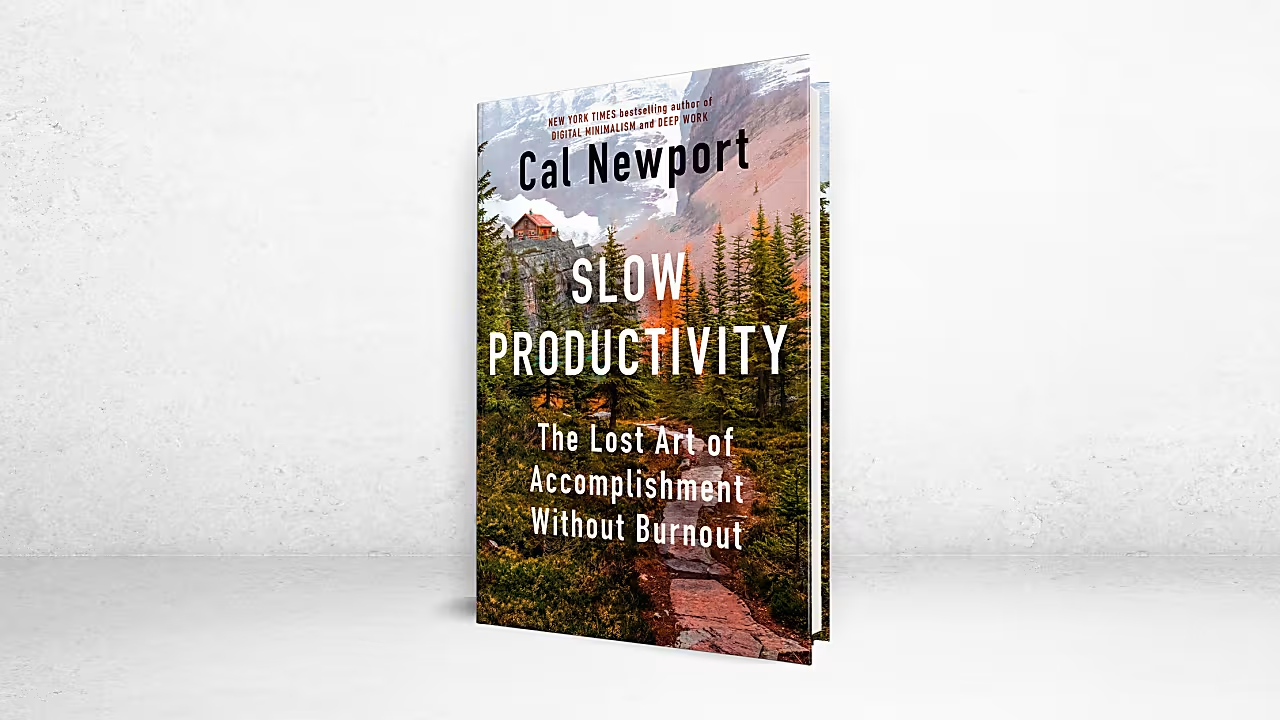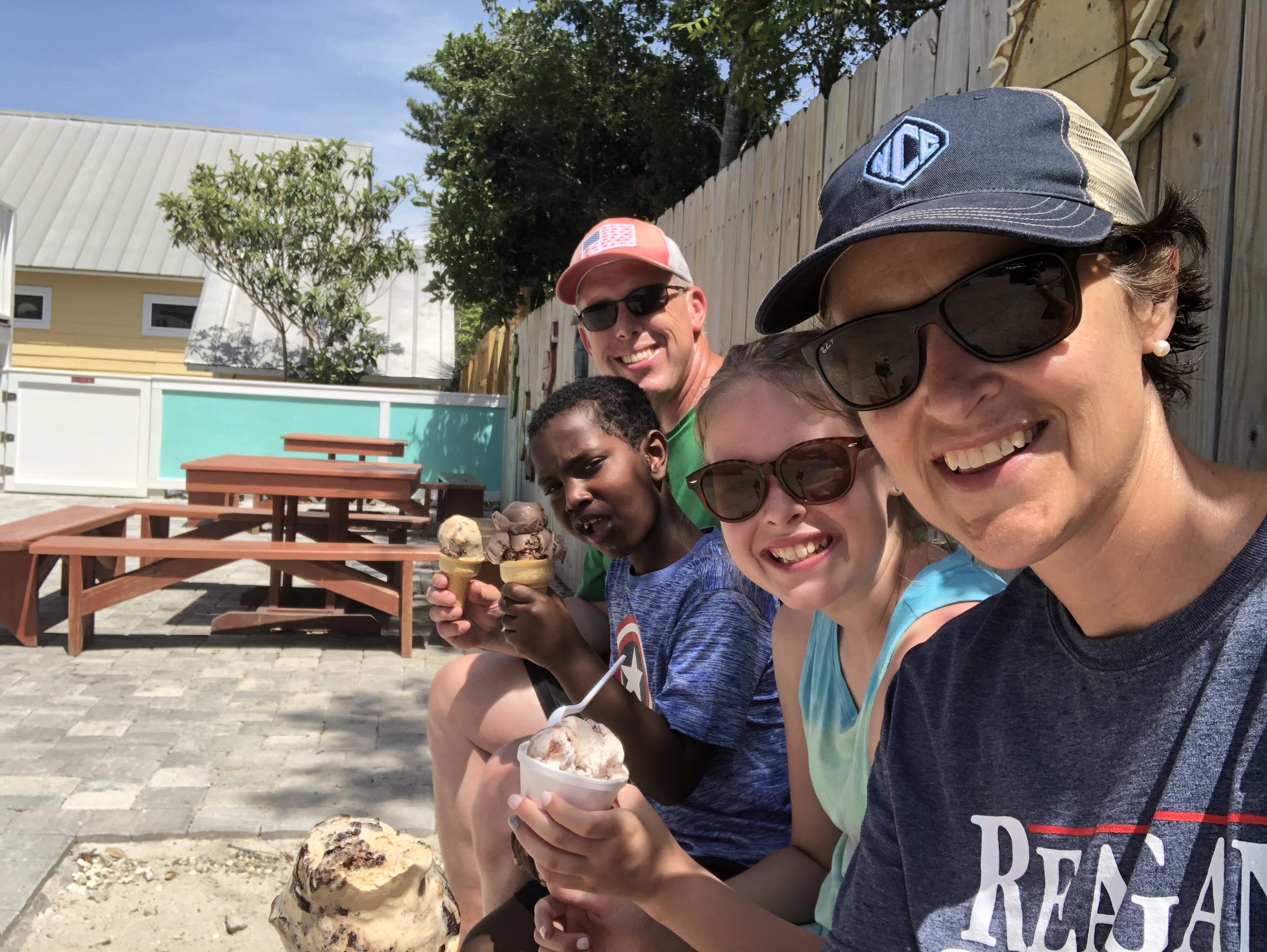
There isn’t a lot that I can add to this one. I’ll just say…read everything that Cal Newport writes. Read it slowly and then put it into practice.
I highlighted several things while reading this one and have posted those notes below…
- The relentless overload that’s wearing us down is generated by a belief that “good” work requires increasing busyness—faster responses to email and chats, more meetings, more tasks, more hours. Location: 144
- SLOW PRODUCTIVITY A philosophy for organizing knowledge work efforts in a sustainable and meaningful manner, based on the following three principles: 1. Do fewer things. 2. Work at a natural pace. 3. Obsess over quality. Location: 152
- this philosophy rejects busyness, seeing overload as an obstacle to producing results that matter, not a badge of pride. It also posits that professional efforts should unfold at a more varied and humane pace, with hard periods counterbalanced by relaxation at many different timescales, and that a focus on impressive quality, not performative activity, should underpin everything. Location: 157
- In knowledge work, by contrast, individuals are often wrangling complicated and constantly shifting workloads. You might be working on a client report at the same time that you’re gathering testimonials for the company website and organizing an office party, all the while updating a conflict of interest statement that human resources just emailed you about. In this setting, there’s no clear single output to track. And even if you do wade through this swamp of activity to identify the work that matters most—recall Davenport’s example of counting a professor’s academic publications—there’s no easy way to control for the impact of unrelated obligations on each individual’s ability to produce. I might have published more academic papers than you last year, but this might have been, in part, due to a time-consuming but important committee that you chaired. In this scenario, am I really a more productive employee? Location: 249
- As the twentieth century progressed, this visible-activity heuristic became the dominant way we began thinking about productivity in knowledge work. Location: 275
- PSEUDO-PRODUCTIVITY The use of visible activity as the primary means of approximating actual productive effort. Location: 286
- A strategic planner named Steve provided a good summary of this experience: It seems like the benefits of technology have created the ability to stack more into our day and onto our schedules than we have the capacity to handle while maintaining a level of quality which makes the things worth doing. . . . I think that’s where the burnout really hurts—when you want to care about something but you’re removed from the capacity to do the thing or do it properly and give it your passion and full attention and creativity because you’re expected to do so many other things. Location: 314
- KNOWLEDGE WORK (GENERAL DEFINITION) The economic activity in which knowledge is transformed into an artifact with market value through the application of cognitive effort. Location: 474
- The second part of this book is dedicated to elaborating a philosophy of slow productivity—an alternative framework knowledge workers can use to organize and execute tasks that sidesteps the hurry and ever-expanding workloads generated by pseudo-productivity. My goal is to offer a more humane and sustainable way to integrate professional efforts into a life well lived. To embrace slow productivity, in other words, is to reorient your work to be a source of meaning instead of overwhelm, while still maintaining the ability to produce valuable output. Location: 501
- SLOW PRODUCTIVITY A philosophy for organizing knowledge work efforts in a sustainable and meaningful manner, based on the following three principles: 1. Do fewer things. 2. Work at a natural pace. 3. Obsess over quality. Location: 507
- This lesson, that doing less can enable better results, defies our contemporary bias toward activity, based on the belief that doing more keeps our options open and generates more opportunities for reward. But recall that busy Jane Austen was neither happy nor producing memorable work, while unburdened Jane Austen, writing contently at quiet Chawton cottage, transformed English literature. Location: 622
- PRINCIPLE #1: DO FEWER THINGS Strive to reduce your obligations to the point where you can easily imagine accomplishing them with time to spare. Leverage this reduced load to more fully embrace and advance the small number of projects that matter most. Location: 627
- The advantage of doing fewer things, however, is about more than just increasing the raw number of hours dedicated to useful activity; the quality of these hours also increases. Location: 702
- It’s not just because overload is exhausting and unsustainable and a miserable way to exist—though it certainly is—but because doing fewer things makes us better at our jobs; not only psychologically, but also economically and creatively. Focusing intensely on a small number of tasks, waiting to finish each before bringing on something new, is objectively a much better way to use our brains to produce valuable output. Location: 713
- How do knowledge workers decide when to say no to the constant bombardment of incoming requests? Location: 739
- Small tasks, in sufficient quantity, can act like productivity termites, destabilizing the whole foundation of what you’re trying to build. It’s worth going to great lengths to tame them. Location: 984
- Slow productivity requires that you free yourself from the constraints of the small so that you can invest more meaningfully in the big. This is a messy, detail-oriented conflict, largely fought on the battleground of old-fashioned productivity tactics and systems. But it’s a battle that must be fought if you hope to, as Benjamin Franklin lauded, become the master of your own time. So, let’s get into it . . . Location: 998
- Once you get used to accomplishing a specific type of task at the same times on the same days, the overhead required for their execution plummets. Location: 1,015
- Our exhausting tendency to grind without relief, hour after hour, day after day, month after month, is more arbitrary than we recognize. It’s true that many of us have bosses or clients making demands, but they don’t always dictate the details of our daily schedules—it’s often our own anxieties that play the role of the fiercest taskmaster. We suffer from overly ambitious timelines and poorly managed workloads due to a fundamental uneasiness with ever stepping back from the numbing exhaustion of jittery busyness. Location: 1,389
- PRINCIPLE #2: WORK AT A NATURAL PACE Don’t rush your most important work. Allow it instead to unfold along a sustainable timeline, with variations in intensity, in settings conducive to brilliance. Location: 1,399
- Slow productivity emphatically rejects the performative rewards of unwavering urgency. There will always be more work to do. You should give your efforts the breathing room and respect required to make them part of a life well lived, not an obstacle to it. Location: 1,407
- First, form your own personalized rituals around the work you find most important. Second, in doing so, ensure your rituals are sufficiently striking to effectively shift your mental state into something more supportive of your goals. Location: 1,993
- PRINCIPLE #3: OBSESS OVER QUALITY Obsess over the quality of what you produce, even if this means missing opportunities in the short term. Leverage the value of these results to gain more and more freedom in your efforts over the long term. Location: 2,101
- Quality demands that you slow down. Once achieved, it also helps you take control of your professional efforts, providing you the leverage needed to steer even further away from busyness. Location: 2,105
Categories:



